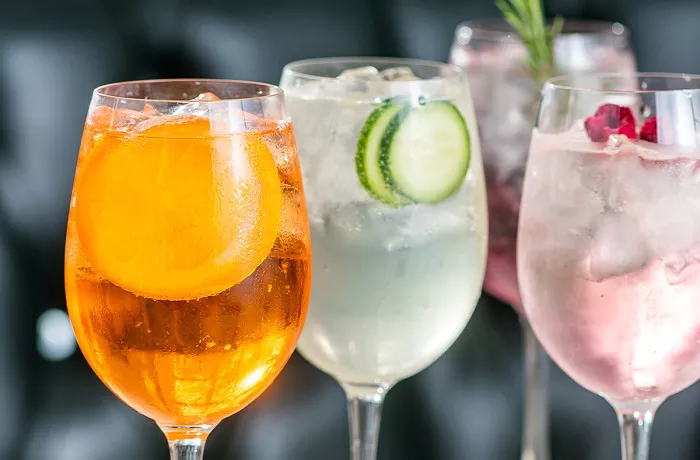Once characterized primarily by chain restaurants, strip malls, and suburban routines, American “bedroom communities” are now awakening to a new cultural wave: the rise of the suburban craft cocktail bar.
Historically, residents seeking a well-made drink beyond the confines of a local Applebee’s were forced to commute to nearby cities. But that narrative is rapidly shifting, as high-quality cocktail programs take root in neighborhoods long considered bastions of culinary conformity.
A Changing Suburban Landscape
Two distinct demographics define the suburban population: lifelong residents with deep community ties and urban transplants drawn by homeownership, space, and post-pandemic flexibility. Both groups increasingly share a common desire—access to refined drinking experiences without the hassle of traveling into the city.
Recognizing this demand, bar owners with city credentials and local roots are meeting it head-on. Jonathan Gonzalez, founder of Hunter & Thief in Lindenhurst, N.Y., exemplifies this shift. Opened in 2023, the venue brings a Brooklyn-inspired cocktail experience to Long Island, located about 40 miles from Manhattan.
“I didn’t want to miss my kids growing up by running a bar in the city,” Gonzalez says, emphasizing the importance of balancing family life with entrepreneurial ambition. “Guests can have their Manhattan experience here, without spending hundreds on a sitter and transit.”
In Texas, bar owner Tanner Agar is taking a similar approach. After success with Rye in McKinney and Apothecary in Dallas—both critically acclaimed for their cocktail programs—Agar is returning to the suburbs with Flamant, a European bistro opening in Plano. He sees suburban residents as highly receptive.
“In some ways, suburban guests are more informed,” Agar notes. “They’re often older and have developed more refined palates compared to the younger crowds in urban bars.”
Bridging the Cocktail Knowledge Gap
The evolution of suburban cocktail culture has not been without challenges. When Luiz Fernandes opened Ember & Alma in Framingham, Mass., in 2019, community response was slow. Fernandes, drawn by affordable operating costs and a sizable Brazilian population, had to demystify cocktail culture for guests more accustomed to chains.
“Initially, people didn’t understand what we were doing,” Fernandes recalls. “We had to show them we were using real ingredients and not relying on pre-made mixes.”
Education proved crucial. By striking a balance between accessibility and sophistication, Ember & Alma cultivated a loyal following. Gonzalez experienced a similar learning curve. “Our first menu was too technical,” he admits. “Now it’s progressive, but approachable. We describe drinks in relatable terms—like saying something is similar to a strawberry Margarita.”
This thoughtful approach allows bartenders to serve both novices and enthusiasts. As Fernandes puts it, “You look for teaching moments. That’s where growth happens.”
Suburban Venues, Big City Vibes
In Southern California’s Orange County, cocktail culture is growing primarily through upscale restaurants rather than stand-alone bars. These dining destinations serve as incubators for mixology programs that blend creativity with community engagement.
At OLEA in Newport Beach, bar lead Inga Tantisalidchai embraces innovation while tailoring her offerings to a diverse clientele. A cocktail of the month slot allows her to introduce guests to bold combinations—such as strawberry purée with Thai chili and yuzu—while clever names like Strawberry Fields Forever ease older patrons into unfamiliar territory.
Tantisalidchai also personalizes the experience through “dealer’s choice” drinks guided by cocktail dice. Standout creations are even named in honor of guests, further embedding a sense of ownership and connection.
Beyond the Drink: Crafting the Experience
Ultimately, the suburban craft cocktail movement is about more than the beverages. It’s about creating spaces that offer familiarity, hospitality, and elevated experiences—elements often missing in chain-heavy landscapes.
“A suburban bar or bartender may not win awards,” Gonzalez acknowledges. “But that just means we pour more effort into crafting a memorable guest experience.”
This emphasis aligns with the essence of suburban life: comfort, community, and meaningful connection. Craft cocktails simply add a sophisticated touch.
“Living in the suburbs doesn’t mean people don’t want quality,” Fernandes says. As suburban bars evolve, they are not only reshaping local nightlife but redefining the cultural possibilities of the suburbs themselves.
Far from being places to sleep, these communities are proving wide awake to the pleasures of well-crafted drinks and intentional hospitality.
You Might Be Interested In:


